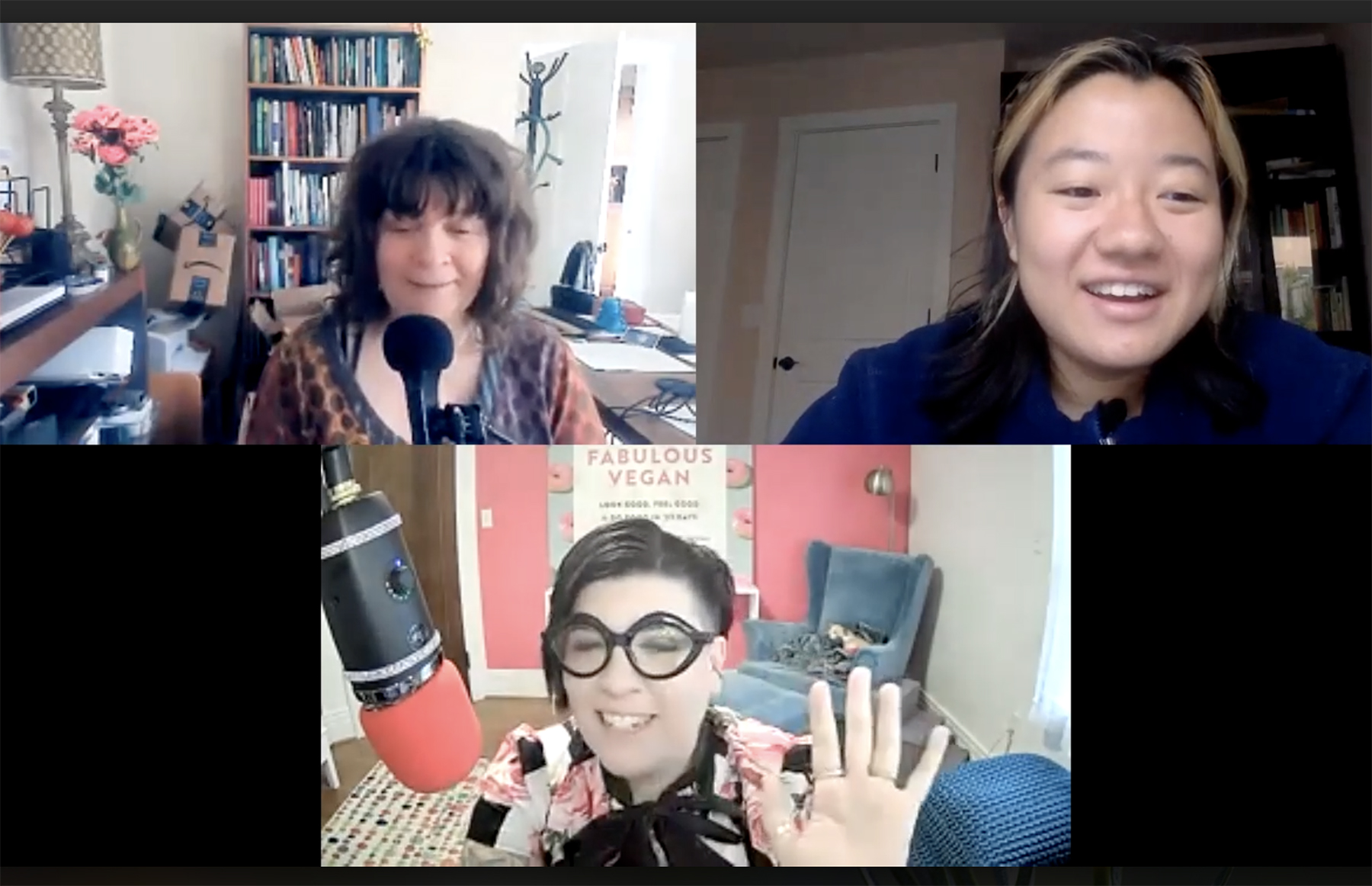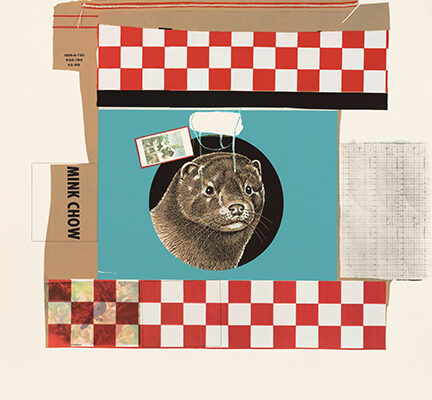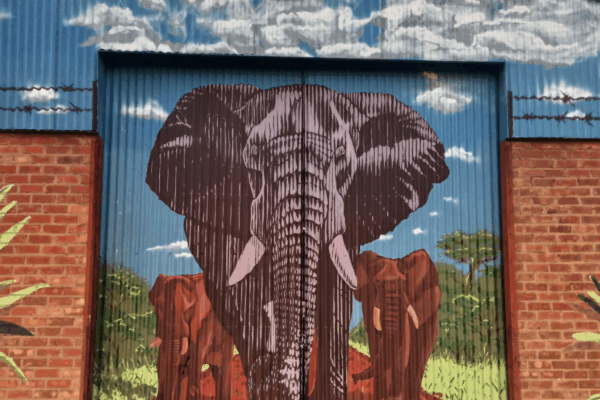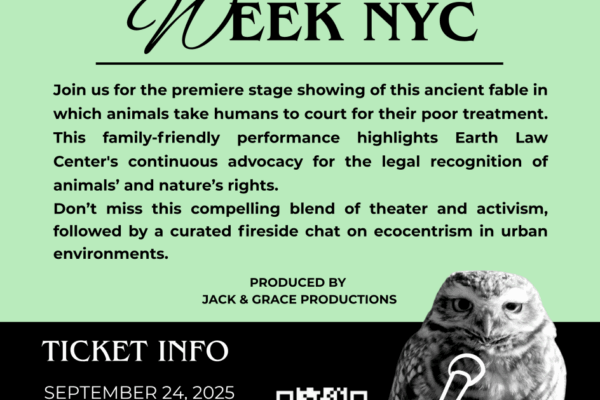In August 2021, CAF associate and Columbia University Navab Fellow Mary Qiu interviewed via Zoom Jasmin Singer and Mariann Sullivan, the founders of the podcast Our Hen House, a three-time CAF grant recipient, to celebrate its 600th episode. CAF associate and Columbia College Navab Fellow Makenna Cherry listened in.
Mary began with a general question about the podcast: “Are there common threads you’ve discerned in the animal advocacy movement that tie your 600+ episodes together?” Mariann replied that she felt the common thread was activism. Our Hen House (OHH), she said, made a point to showcase various changemakers working toward a common goal in different ways. Jasmin agreed: “There is no singular way to change the world for animals.” Although most guests on the podcast were vegan, and Our Hen House came from a vegan perspective, the “real through-line,” said Mariann, “is people who get the big picture about animals and are trying to do something to change everything about the way we see them and treat them.”
Mary then asked what made the podcast stand out, given there were many more podcasts now discussing animals than when OHH started. Jasmin and Mariann agreed that although there’d been a growth in podcasts about the vegan lifestyle, there were still not many at the intersection of animal activism and veganism, and that animal activism was not covered very deeply, which is how OHH stood apart.
Mary inquired about what campaigns, issues, or perspectives had changed in animal advocacy since Episode 1. Jasmin responded that in January 2010, when the podcast began, the biggest issue, especially in the vegan community in New York City, where Our Hen House was based, was animal welfare versus animal liberation. Much of the discussion now, she said, concerned itself with the ethics of lab-grown meat, ethical consumerism, and ethical capitalism. “As veganism has become more mainstream, the topics have gotten much bigger and broader,” Mariann added. “The thing that changed everything was the plant-based/cultured meats. What was essentially this quixotic effort to get people to care about animals suddenly became possible—that we were actually going to see real change. A lot of money started coming into the movement.”
Mariann also observed that the climate emergency was a significant factor in shifting perspectives, because as much as animal agriculture was fighting any attempt to hold it accountable for its effect on the planet, there was growing recognition “that what we’re doing to animals actually hurts us.” She acknowledged that the debate about welfare versus liberation remained prevalent, and she admitted she didn’t think it would ever die, especially as activists were campaigning for more radical changes. She argued that people were now driven by the fact that real change was conceivable, and that they understood the value and moral imperative of including anti-racism in animal advocacy as a core tenet.
Mary asked whether Jasmin and Mariann felt that the emergence of cultivated meat and dairy products might impede increasing empathy for animals. Jasmin replied that the question wasn’t about getting more people to be more empathetic, but about using limited time to create the biggest possible change for animals, which might not include empathy. She added that that change might be brought about by accessibility, convenience, and cultural acceptance. “The lab meat movement,” she said, “to me is our only hope. It might not mean that people care about pigs and cows; but it might mean that they stop eating them.”
Reflecting on Jasmin’s statement, Mary asked whether the pair felt more or less hopeful about the future of the animal advocacy movement. Jasmin gave a deep sigh, before looking to Mariann for an answer. Mariann laughed, as neither of them wanted to answer that weighty question. Jasmin finally took a stab at it: “I think that hope is something we can opt into and I need to opt into it a lot more than I used to,” she said. “I am not hopeless, but I am strategic about my hope. It is not something I have, based on what I’m observing.” Mariann nodded: “My answer is about the same, except I’m worse. I’m pretty dark about the future, but that’s not going to help anybody; that’s not going to help animals. You know, I’m old. As you get older, hope tends to get lower. You’ve seen more. I try not to even think of it in terms of hope; I try to think of it in terms of, ‘I want to do what’s right with my life to the extent that I can and fighting for animals is right.’ I don’t know whether that will create change, and I’m not going to go to myself and ask that question because it could make you give up, and what’s the point of doing that?”
Mary laughed: “Good to know that hope declines as you age.”
In response, Jasmin and Mariann highlighted the presence in the movement of many hopeful young advocates, such as Isaias Hernandez, creator of QueerBrownVegan. “The fact that Isaias has hope actually kind of gives me hope,” Jasmin admitted. Mariann offered another perspective. “Lab-cultured meat gives me hope because it makes it seem possible that we’ll get at least some of the animals out of this [situation]. I like to think of vision more than hope. Hope has a certain amount of expectation, but I can envision a world that works.”
Mary wondered whether Jasmin and Mariann’s beliefs and conclusions had shifted since they began. “I think that as any movement evolves,” Jasmin replied, “we can evolve our thoughts on the strategy of what works. So, for me, the thing that has shifted has been strategy. I think I used to really believe that we could get people to care about animals and now I think it’s more important that we focus on how to create change for animals as opposed to how to change hearts and minds. It’s a strategy shift for me more so than a worldview shift.” For her part, Mariann felt that her mindset had remained about the same since she got into animal advocacy when she was in her forties, although she agreed that strategy had changed. Back in the 1990s, she said, the goal had been to inform people of what was happening to animals in hopes that this would create an enormous change. Activists had realized that it was going to take more than just that strategy.
In reacting to the conversation, Mary reflected that it was interesting to hear Jasmin and Mariann talk about moving away from changing hearts and minds, since much of CAF’s mission surrounded shifting minds and touching hearts through the arts. Jasmin clarified that she was most passionate about the arts and media. “One of the reasons we started Our Hen House,” she said, “was to reach people through the arts and to elevate the voices of artists who are making change for animals and creating a deeper dialogue around that. That’s why Culture & Animals is so near to our mission and near to our heart. We always make sure that we have artists in the mix with our podcast. That kind of goes against what I just said about strategy; therefore, I think there’s a nugget of truth in all of this. On one hand, we need to be elevating the artists, changing the world through the arts, but on the other hand, we also need to be extremely cerebral about how we’re approaching change-making.”
“The thing that does give me hope is that most people actually do love animals,” responded Mariann. “It’s not like you gradually come to care about animals and factory farming and go vegan. Somehow, a shift takes place where you suddenly see it in a different way.” One way that shift could occur, Mariann added, was for the culture to shift: more people demonstrating care for animals would give more permission and acceptability for others to do the same. “Once [people] give themselves permission, I think [animal exploitation] could fall like a house of cards,” she said. “Nobody wants to [harm] animals. So that is the thing that gives me hope. It’s not based on beliefs; it’s based on behavior. People’s beliefs [regarding animals], for the most part, are completely different from what they participate in.”




